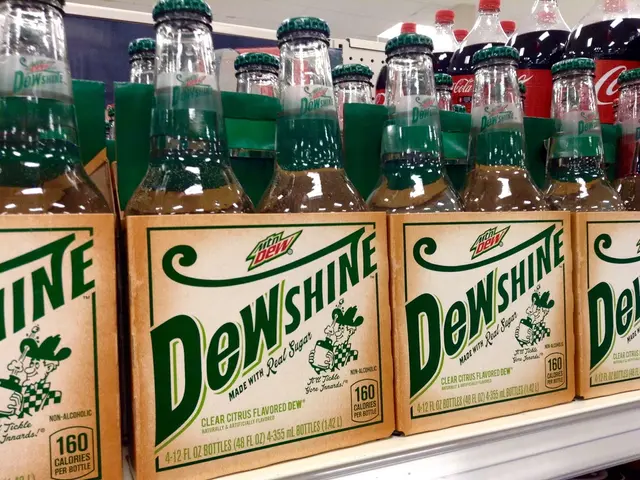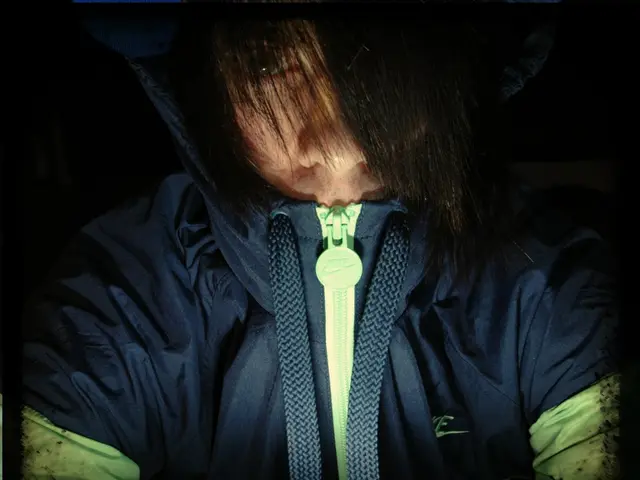Sunscreen Protection Factor: A Look at its Importance and Application
Covering Up: Essential Sunscreen Choices for Different Skin Types and Kids
Strolling down the sunscreen aisle leaves your head spinning. With various lotions, gels, creams, and sprays boasting high and low sun protection factors for all ages, finding the right sun protection may seem daunting. Two experts help demystify the process by answering essential questions.
1. What's the SPF Deal?
Every sunscreen product features a sun protection factor (SPF). Typically ranging between 6 and 50+, the SPF denotes how much longer the cream or spray protects the skin from sunburn and UV-related damage compared to unprotected skin.
Factor in your skin type, which varies from 5 minutes on fair skin to over an hour on dark skin when exposed to sunlight. Sunscreen boosts that natural protection time, and the SPF determines its duration: Multiply it by your skin type's protection time, and voila! You've got your sunscreen duration.
That said, excessive sunbathing is unhealthy, even with high SPF sunscreen, as it doesn't provide 100% protection from UV radiation, according to the Federal Office for Radiation Protection (BfS). Try not to exhaust the theoretically possible protection time by more than 60%.
2. Which Sunscreen Suits Me Best?
Your skin type, preferences, and lifestyle dictate the best sunscreen for you. A lighter cream or spray may appeal to those with oily or sensitive skin, while richer creams will satisfy drier complexions. Athletes might prefer a water-resistant brand to avoid sunscreen running into their eyes during sweaty activities.
3. When's UV Rays Most Menacing?
Lots of factors determine the UV index, such as the time of year, latitude, and time of day. Don't be fooled by a cloudy day—UV radiation can occasionally be higher on cloudy days than on clear ones.
Keep an eye on the UV index, found in popular weather apps, which ranges from 1 to 11+. The Federal Office for Radiation Protection (BfS) suggests protecting eyes and skin from the sun at a UV index of 3 or higher, and avoiding being outside during peak hours at a UV index of 8 or higher.
4. Sunscreen Application Do's and Don'ts
bastion of defense, sunscreen is key. A head covering also helps.
Remember overlooked areas: ears, lips, hands, neck, and skin-clothing transitions. "People with little or no hair often forget to cream their heads or wear a head covering," says dermatologist Marion Moers-Carpi.
To ensure sunscreen efficacy, hydrate your skin with a lotion or skin cream before applying. Cream it on, then let it absorb, and apply sunscreen. The SPF of a daily cream cannot be increased with additional sunscreen.
5. How Much Sunscreen is Enough?
Many people apply too little sunscreen[1]. According to the German Cancer Society, 2 milligrams of sunscreen per square centimeter of skin is optimal. That translates to roughly a fifth of a 200-milliliter bottle for an adult's whole body.
Use this rule of thumb: Apply two finger lengths (index and middle finger together) for each body region. Reapply twice a day, after sweating, exercising, swimming, or towel-drying. The BfS recommends reapplying every two hours.
6. Kids and Sunscreen
Infants and young children lack their own skin protection. They require specific sun protection.
Stay away from chemical sunscreens and opt for physical sunscreens with zinc oxide or titanium dioxide for babies. Children have sensitive skin, so an SPF of 50 or higher is recommended.
Look for fragrance-free products for young children as fragrances can increase the risk of allergies.
7. Sunscreen's Shelf Life
Sunscreens from last year aren't necessarily trash! If the sunscreen has remained unopened and has spent its life in the cabinet, it can still be used.
Once opened, sunscreens are generally good for 12 months, indicated by the pot symbol with a month number on the back of most packaging. If a symbol of an open cream jar with a number is printed on the sunscreen tube, it means this product can be safely used for 12 months after opening.
Trust your senses: If the cream smells rancid or the oil and water have separated, discard it. If the sunscreen has experienced extreme heat, it should also be discarded.
Skin-Friendly Sunscreens for Various Skin Types
- Oily/Acne-prone Skin: Choose oil-free, non-comedogenic formulas; gel-based or serum sunscreens are ideal. Avoid thick, greasy lotions.
- Dry Skin: Select sunscreens with moisturizing ingredients like hyaluronic acid or glycerin. Creamy or lotion-based formulations work best. Steer clear of alcohol-based products that can further dry out skin.
- Sensitive Skin: Opt for mineral sunscreens with zinc oxide or titanium dioxide; products free from fragrances, parabens, and other potential irritants are preferable.
- Children: Mineral sunscreens are the safest choice. Look for products labeled as "broad-spectrum," "SPF 30 or higher," and "water-resistant." Avoid spray sunscreens for young children due to the inhalation risk; opt for creams or lotions.
Sunscreen Application Essentials
- Step 1: Clean, dry skin is essential. Follow with a moisturizer if you have dry or combination skin for smoother sunscreen application.
- Step 2: Measure the right amount—2 finger lengths for the face, and around an ounce for the entire body.
- Step 3: Dot sunscreen on your forehead, cheeks, nose, and chin, then gently blend evenly, covering all exposed areas, including ears and neck.
- Step 4: Apply sunscreen 15–20 minutes before sun exposure to ensure it binds to the skin.
- Step 5: Reapply every two hours, or immediately after swimming, sweating, or towel-drying.
Sunscreen Effectiveness Duration
- Immediate Protection: Sunscreen needs 15–20 minutes to bind to the skin before it becomes fully effective.
- Duration: Sunscreen remains effective for approximately 2 hours before reapplication is necessary, even if labeled as "water-resistant" or "sweat-proof."
- Environmental Factors: Reapply after swimming, sweating, or rubbing the skin, as these activities reduce effectiveness.
8. Embracing Sunscreen in Health-and-Wellness and Skin-Care Routines Incorporating sunscreen into your daily routine can be a preventive measure against harmful UV rays. Consider sunscreen as an essential ingredient in your health-and-wellness and skin-care routines.
9. Community Policy on Sunscreen Usage Encourage a community policy promoting the regular use of sunscreen. This policy can aspirate a shared commitment to protect skin health and reduce the risk of skin diseases related to excessive sun exposure.
10. Employment Policy and Sunscreen Breaks Employers could implement sunscreen break policies, especially for outdoor workers. This policy could allow employees to apply sunscreen regularly, ensuring they have protected skin during work hours.
11. Sunscreen as a Workplace Provision Providing sunscreen in the workplace can be another measure to prioritize employee skin health. Offering sunscreen at work can help employees maintain their protection, especially during long hours spent outdoors.
12. Implementing Holistic Sun Protection Policies Adopting holistic sun protection policies can promote a healthy and sun-conscious work environment. These policies could include sunscreen provision, sun protective clothing, and education about UV indices and the importance of regular sunscreen application.








